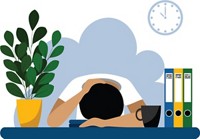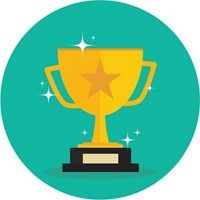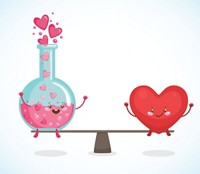Advertisement
Grab your lab coat. Let's get started
Welcome!
Welcome!
Create an account below to get 6 C&EN articles per month, receive newsletters and more - all free.
It seems this is your first time logging in online. Please enter the following information to continue.
As an ACS member you automatically get access to this site. All we need is few more details to create your reading experience.
Not you? Sign in with a different account.
Not you? Sign in with a different account.
ERROR 1
ERROR 1
ERROR 2
ERROR 2
ERROR 2
ERROR 2
ERROR 2
Password and Confirm password must match.
If you have an ACS member number, please enter it here so we can link this account to your membership. (optional)
ERROR 2
ACS values your privacy. By submitting your information, you are gaining access to C&EN and subscribing to our weekly newsletter. We use the information you provide to make your reading experience better, and we will never sell your data to third party members.
Environment
Perspectives: Tips to help chemists achieve a work-life balance
Geochemist and marathoner Elizabeth Herndon says finding the perfect work-life balance is a balancing act unto itself
by Elizabeth M. Herndon, Kent State University
July 4, 2016
| A version of this story appeared in
Volume 94, Issue 27

It was late morning on Feb. 13 in Los Angeles, and the hot sun was already beating down unforgivingly. I stood on the starting line of the U.S. Olympic marathon trials, there by virtue of a 2:39 marathon I ran that bested the 2:45 trials qualifying time. All around me, competitors applied sunscreen and poured bottles of water over their heads in efforts to counteract the heat.
Few of these women were true professional runners. Rather, I was surrounded by lawyers and medical professionals and caregivers and students, not to mention a few Ph.D.s, who had decided that years of training and chasing that elusive beast—the work-life balance—were worth a chance to compete in the pinnacle of American distance running.
Let’s be clear. Was I going to Rio this summer? Not a chance. Only three out of the 246 qualified women in L.A. that day would become Olympians. This would be the end of the road for me.

In my other life, I am an environmental geochemist and assistant professor of geology at Kent State University, a midsized public research university in northeastern Ohio. I am perhaps more notorious as the woman who ran away with the win and a world record at the first-ever Beer Mile World Championships. You should definitely watch the video on YouTube, if only to learn what a “beer mile” is.
Striking a balance between work and life activities such as those I just mentioned is a challenge that is shared by countless others. For me, we can define “work” as the responsibilities associated with being an assistant professor and “life” as all activities related to running, social interactions with family and friends, and keeping a house in some semblance of order. In reality, these definitions become muddled when we consider that running is often very difficult work, and research does not end with the workday.
Work is characterized by developing and teaching introductory and upper-level classes, advising students, maintaining analytical laboratories, traveling for fieldwork and conferences, and crafting ideas and research into a steady stream of grant proposals and publications. Life is characterized by daily runs averaging 10 to 12 miles, weekly interval sessions on the track, travel to major races, cooking meals with my husband, sleeping seven to eight hours (but wishing it were 10), and a fair bit of Netflix.
The balance between these activities does not exist without difficulty or conflict, nor does it remain effortless. But just because it’s hard doesn’t mean it can’t be fun. Here, I share the strategies that have helped me align these varied pursuits over the years, with the hope that they benefit others’ pursuits.
Maximize efficiency. Rather than multitasking, this often means focusing on one specific task for a defined period of time and minimizing distractions. This is a skill that must be honed over time and usually involves putting your smartphone on silent and out of reach.
Build a support network. These are the family members, colleagues, mentors, and friends who will provide advice, direction, and support when navigating an uncertain future. A network, rather than a single person, is required to fulfill this role.
Prioritize physical and mental well-being. Running encourages me to incorporate healthy behaviors—daily exercise, proper nutrition, and adequate rest—into my lifestyle at the expense of detrimental habits. Sustaining your own well-being is the best way to provide services to others.
Protect your time. I carve out time for running with few exceptions and no apologies. I do the same for writing grants and manuscripts. There will always be competing factors, but it’s important to consider whether daily tasks are pressing enough to detract from your long-term goals. In practical terms, this means I start my workday after my run, even while at conferences, and shut the door to my office when it’s time to write. Protecting your time also means setting aside the guilt of not meeting the expectations that we perceive others have for our time.
Align your time with your goals. Define which goals are most important to you, not to your peers, and allocate time accordingly. This sometimes results in the uncomfortable reality of trading excellence in priority areas for mediocrity in others.
Embrace the journey. The amount of control you have over the previous suggestions will vary substantially. When our expectations do not match our reality, we must acknowledge the messy complexity of life and enjoy the process.
The last point is exemplified by my race at the Olympic trials. Heat is a marathoner’s worst enemy, and for months before the race, I had worried about the L.A. weather. I researched average temperatures for mid-February, bemoaned the forecast, and cursed the race organizers who scheduled a marathon to run in the midday heat. Then, a few days before the race, I realized that I had a choice to make.
I decided to put aside personal ideas of failure and success and enjoy the experience. Races go poorly, experiments fail, injuries niggle at our bodies, and grants are declined. We can throw up our hands in defeat, or dig in and chip away at our goals.
At the start of the race, my legs felt like well-oiled machines that had been crafted through months and years of struggle, but I began to fade around mile 18. As I struggled to stay motivated, I saw Olympic contenders walking on the sidewalk next to the course and realized the heat had forced even seasoned marathon veterans to drop out. I continued to plow forward at a steady pace and gratefully and joyfully crossed the finish line in 43rd place with a time of 2:45:32.
In truth, I am very lucky. I’ve never faced the setback of a major injury or illness. I hold a tenure-track position in a department with great colleagues. The Cleveland-Akron area has a fantastic running scene and a thriving polymer industry that aligns with my husband’s career goals.
There’s no one-size-fits-all solution to a work-life balance. Each person holds distinct career goals and personal challenges that define their journey, and I can only share the strategies that have helped me along mine. As my college coach frequently reminded us, success is taking advantage of your daily opportunities to the best of your abilities.





Join the conversation
Contact the reporter
Submit a Letter to the Editor for publication
Engage with us on Twitter